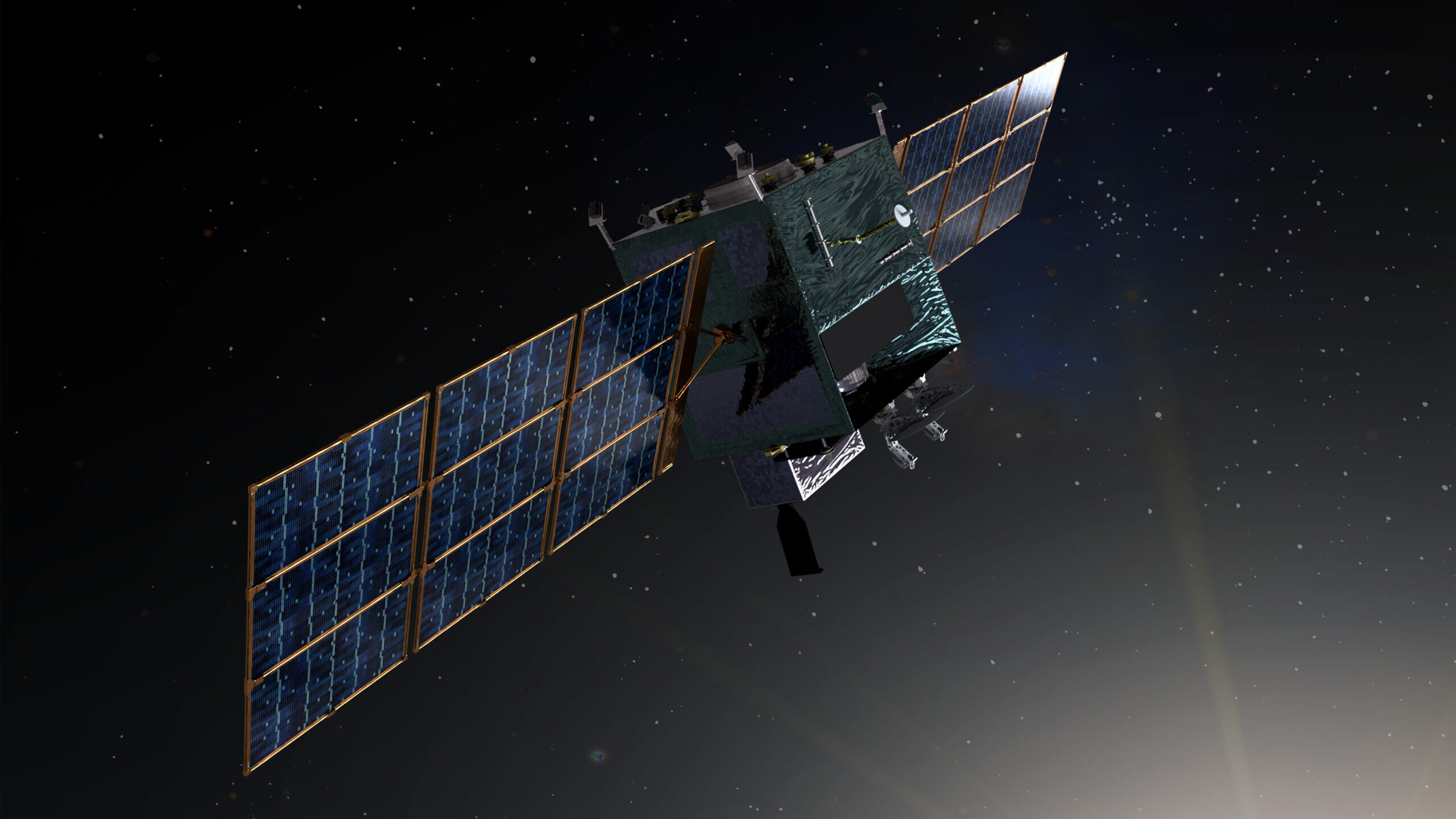
As part of the Next Generation Overhead Persistent Infrared System (Next-Gen OPIR), two polar satellites will provide coverage over the northern hemisphere. (Graphic: Northrop Grumman)
GEOINT 2023 — The Space Force’s flagship missile warning program took a step forward this month, with Northrop Grumman receiving a passing grade in its preliminary design review for the two polar satellites it is contributing to the planned Next Generation Overhead Persistent Infrared (Next-Gen OPIR) constellation.
Alex Fax, the company’s vice president for the program, told Breaking Defense on Tuesday that the successful review, held May 2-4, “helps us stay on track for an accelerated program timeline to get to a 2028 launch. PDR is an important milestone in the life of the program.”
In a press release today, the company explained that the preliminary design review establishes the “technical approach for the full integration of the Eagle-3 spacecraft with the infrared sensor, auxiliary and high-bandwidth communication payloads” for the satellites.
The next step will critical design review, in May 2024.
The Space Force in May 2020 awarded Northrop Grumman a not to exceed contract for $2.37 billion for the development of the two satellites, which will travel in a highly elliptical orbit crossing over the Earth’s poles. That contract was “definitized” last year to a value of $1.9 billion, a company spokesperson said.
“With the two of them you get continuous coverage of the northern hemisphere as well as direct comms back to continental US due to the orbit geometry, which is a nice feature for the program. The mission here is strategic missile warning, to include both ballistic and hypersonic missiles,” Fax said.
The infrared payload on the polar satellites, developed by Northrop Grumman and Ball Aerospace, is a “scanning, multi-band system,” explained Aaron Dann, Northrop Grumman Space Systems vice president for strategic force programs for payload and ground systems division. “In those bands, we have capability against a range of threats,” he added.
It also is the same payload that will go on one of the Lockheed Martin satellites, something that “brings a lot of cost savings,” Fax said.
Randy Weidenheimer, director of OPIR programs at Northrop Grumman, elaborated that the new infrared sensors have “greater sensitivity, as well as greater coverage than the current generation sensors, so there’s a high expectation for their performance.”
Under the original Defense Department plan, the two Northrop Grumman birds were to join three more satellites, built by Lockheed Martin, that will be stationed in geosynchronous orbit to make up the Block 0 Next-Gen OPIR constellation — designed to replace the current Space Based Infrared System (SBIRS) satellites. The Space Force has asked for $2.6 billion in its fiscal 2024 budget for the Next-Gen OPIR program, but also proposed to drop one of the geosynchronous satellites from the buy.






















